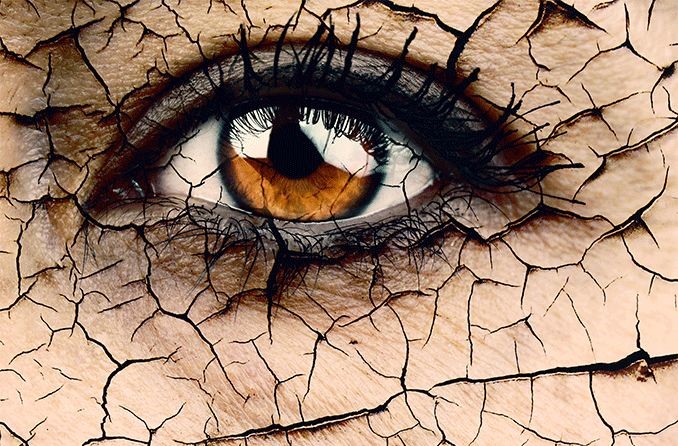There are many potential causes of dry eyes:
Computer use – When working at a computer or using a smartphone or other portable digital device, we tend to blink our eyes less fully and less frequently. This leads to greater tear evaporation and increased risk of dry eye symptoms.
Contact lenses – It can be difficult to determine how much worse contact lenses can make dry eye problems. But dry eyes are a primary reason why people stop wearing contacts.
Aging – Dry eye syndrome can occur at any age, but it becomes more common as you age, especially after age 50.
Indoor environment – Air conditioning, ceiling fans and forced air heating systems all can decrease indoor humidity. This can hasten tear evaporation, causing dry eye symptoms.
Outdoor environment – Dry climates, high altitudes and dry or windy conditions increase dry eye risks.
Air travel – The air in the cabins of airplanes is extremely dry and can lead to dry eye problems, especially among frequent flyers.
Smoking – In addition to dry eyes, smoking has been linked to other serious eye problems, including macular degeneration, cataracts,etc.
Medications – Many prescription and nonprescription medicines increase the risk of dry eye symptoms.
Wearing a mask – Many masks, such as those worn to protect against the spread of COVID-19, can dry the eyes by forcing air out the top of the mask and over the surface of the eye. Wearing glasses with a mask can direct the air over the eyes even more.
Home remedies for dry eyes
If you have mild dry eye symptoms, there are several things you can try to get relief before going to the doctor:
Blink more often. Research has shown that people tend to blink much less frequently than normal when viewing a computer, smartphone or other digital display. This decreased blink rate can cause or worsen dry eye symptoms. Make a conscious effort to blink more often when using these devices. Also, perform full blinks, gently squeezing your eyelids together, to fully spread a fresh layer of tears over your eyes.
Take frequent breaks during computer use. A good rule of thumb here is to look away from your screen at least every 20 minutes and look at something that is at least 20 feet from your eyes for at least 20 seconds. Eye doctors call this the "20-20-20 rule," and abiding by it can help relieve dry eyes and computer eye strain.
Clean your eyelids. When washing your face before bedtime, gently wash your eyelids to remove bacteria that can cause eyes diseases that lead to dry eye symptoms.
Wear quality sunglasses. When outdoors in daylight hours, always wear sunglasses that block 100% of the sun's UV rays. For the best protection, choose sunglasses to protect your eyes from wind, dust and other irritants that can cause or worsen dry eye symptoms.
Universe Optical offers many options for eye protection lenses, including Armor BLUE for Computer use and tinted lenses for Sunglasses. Please click on the below link to find a suitable lens for your life.
link to find a suitable lens for your life.





